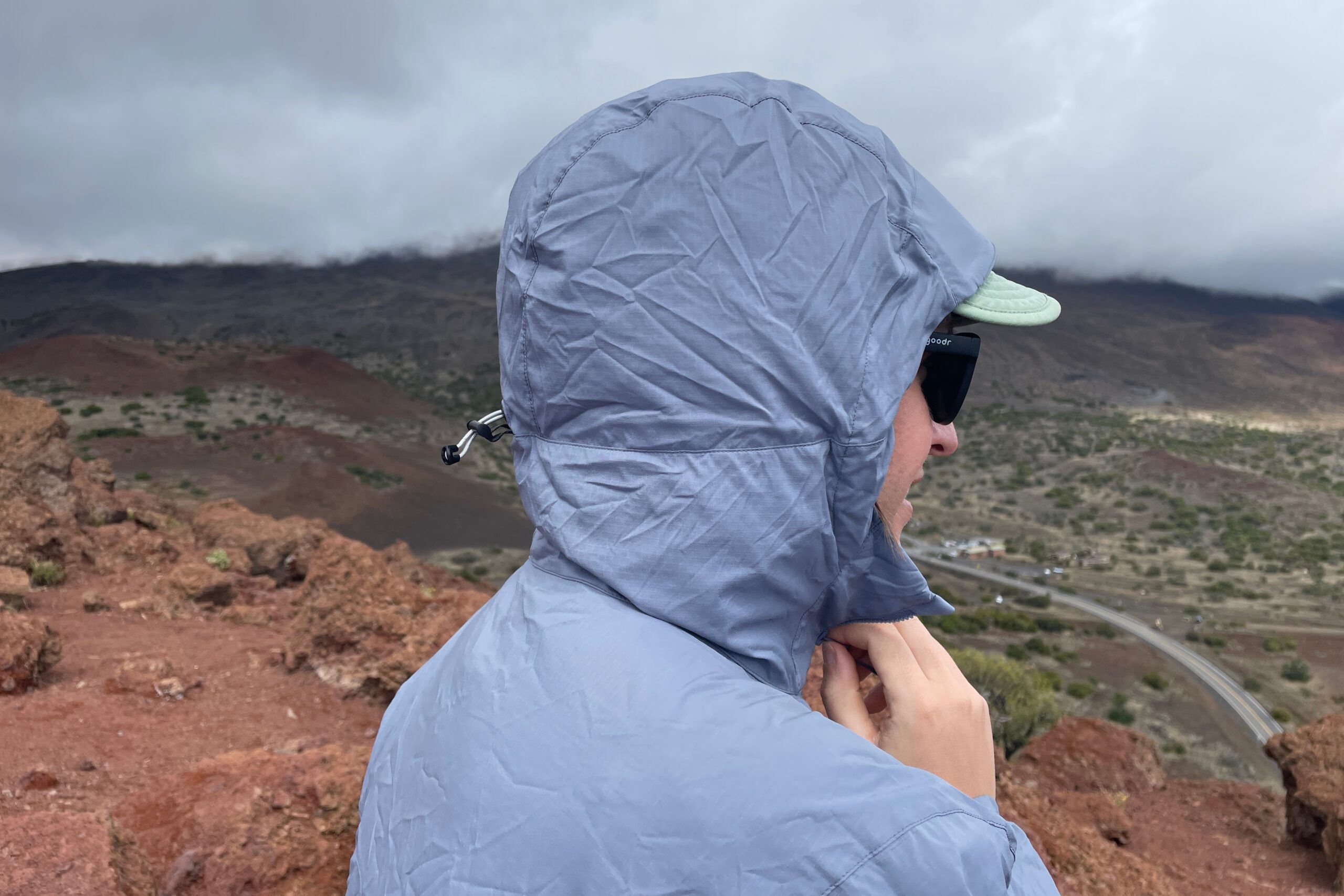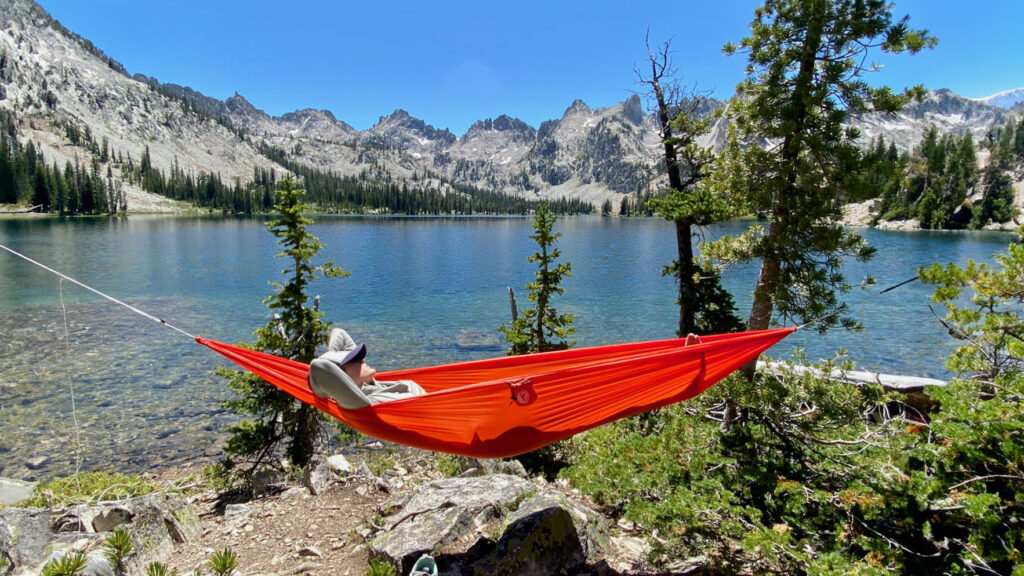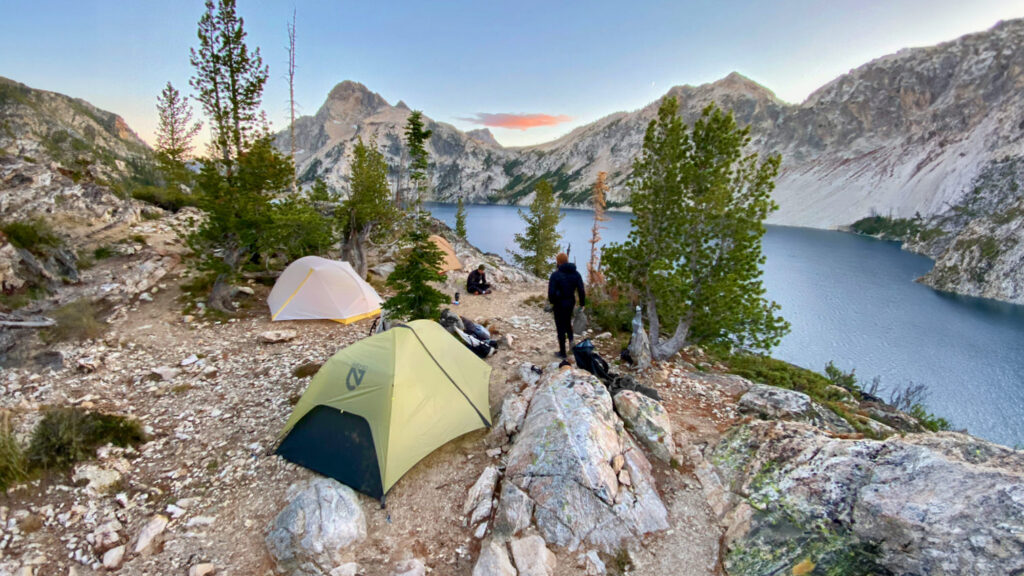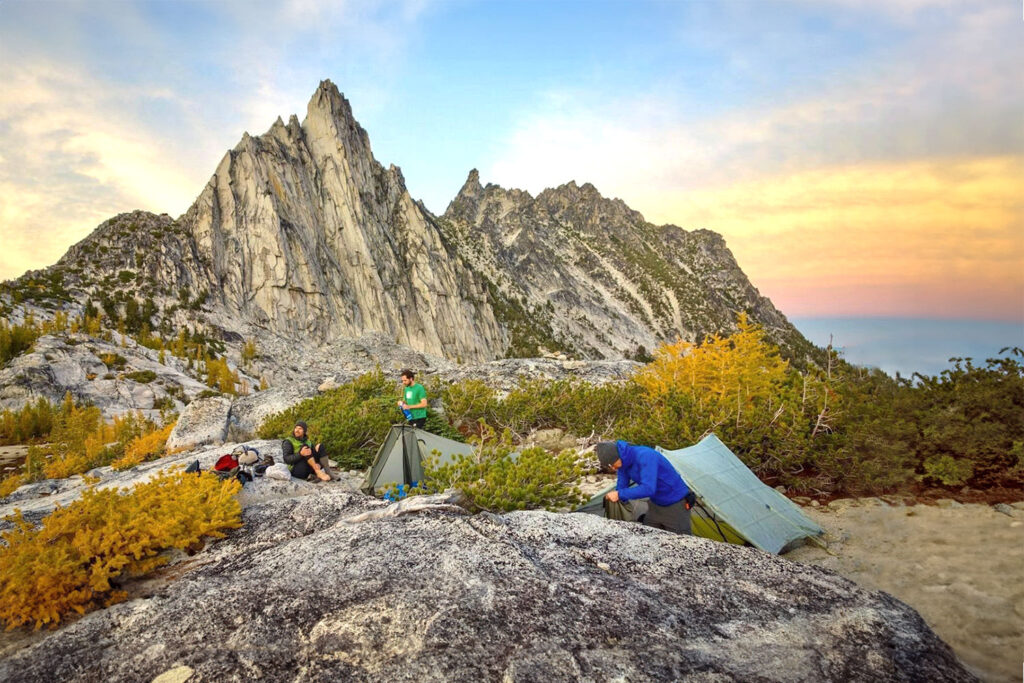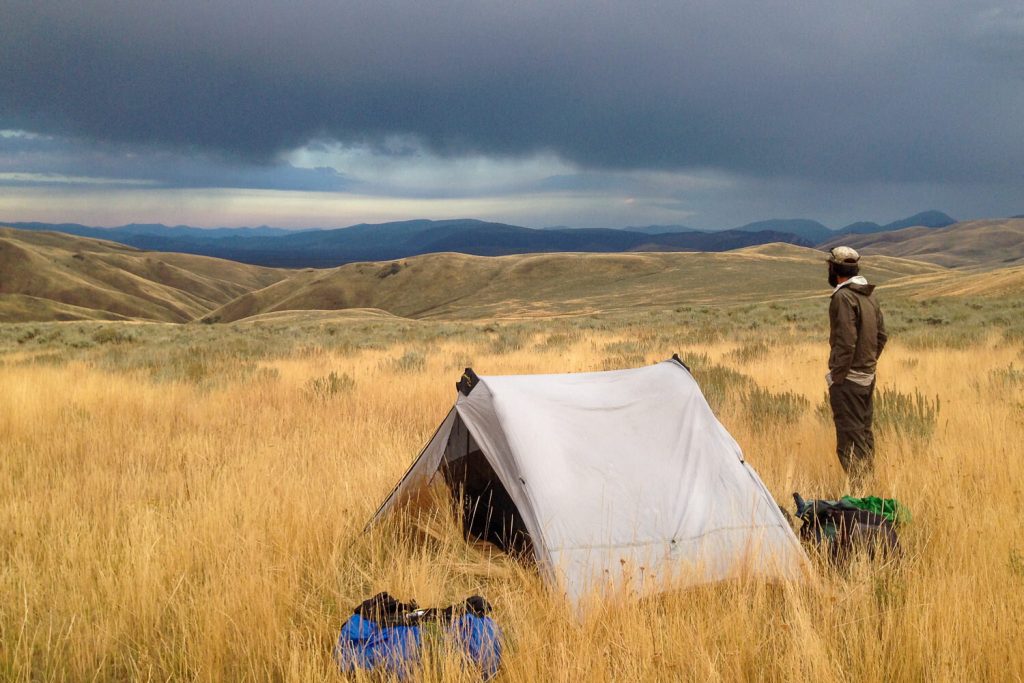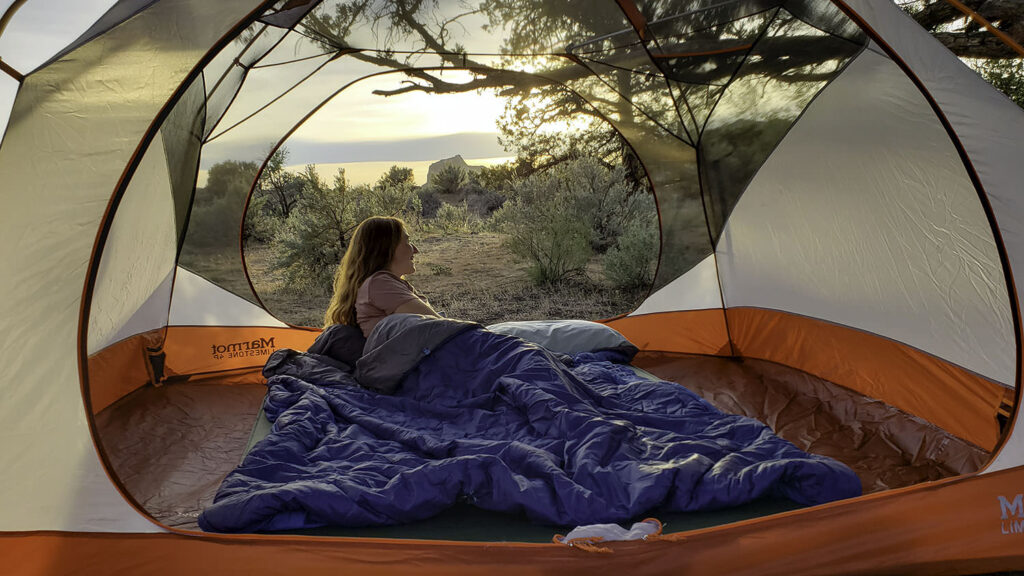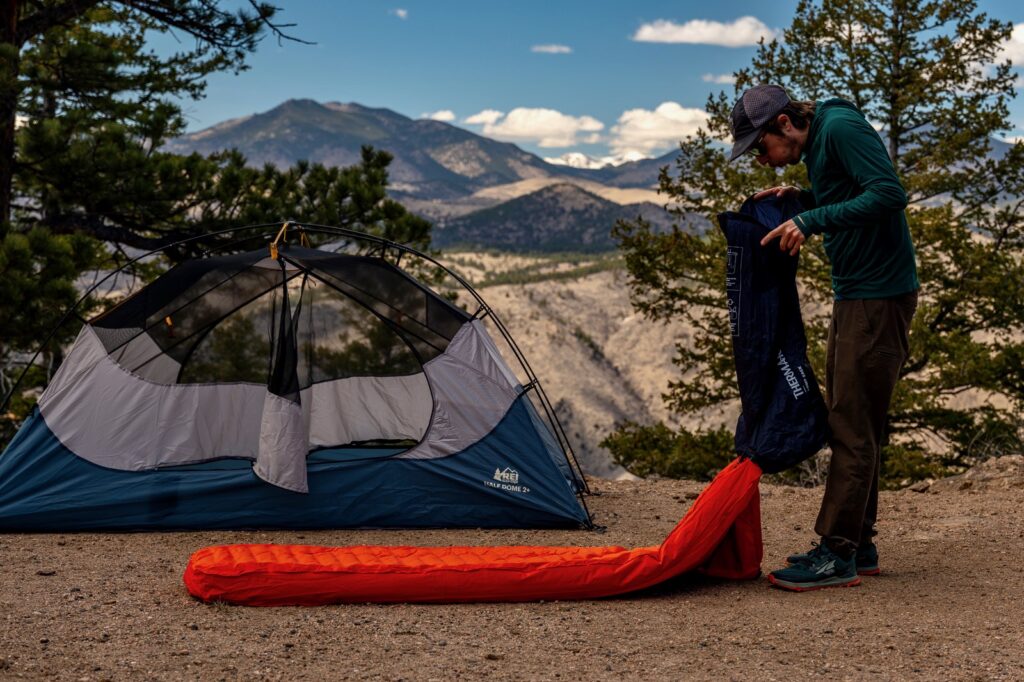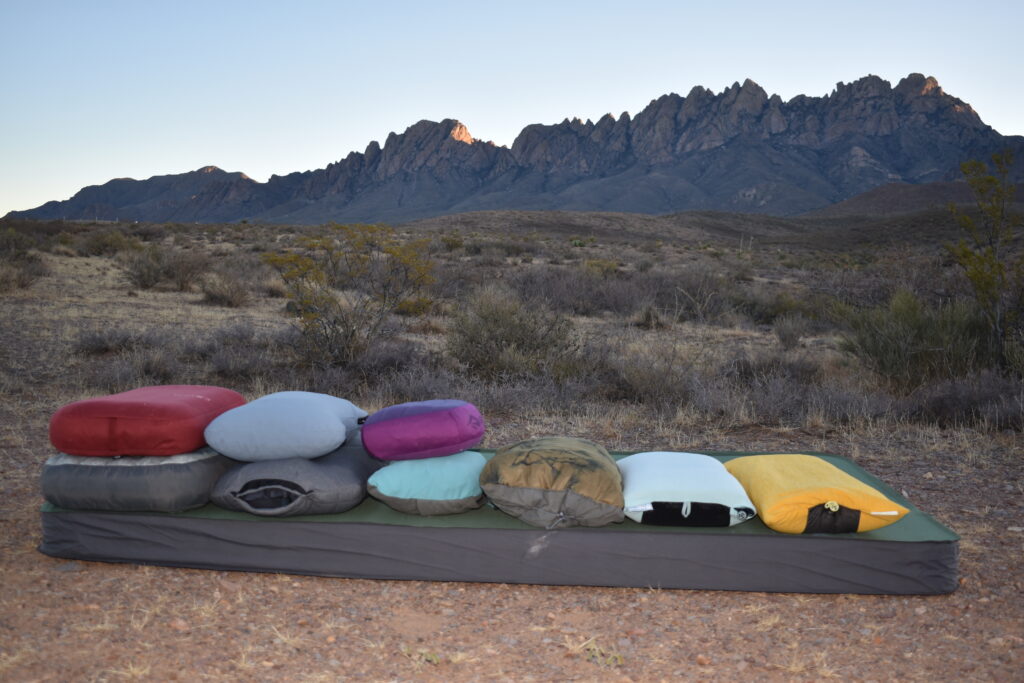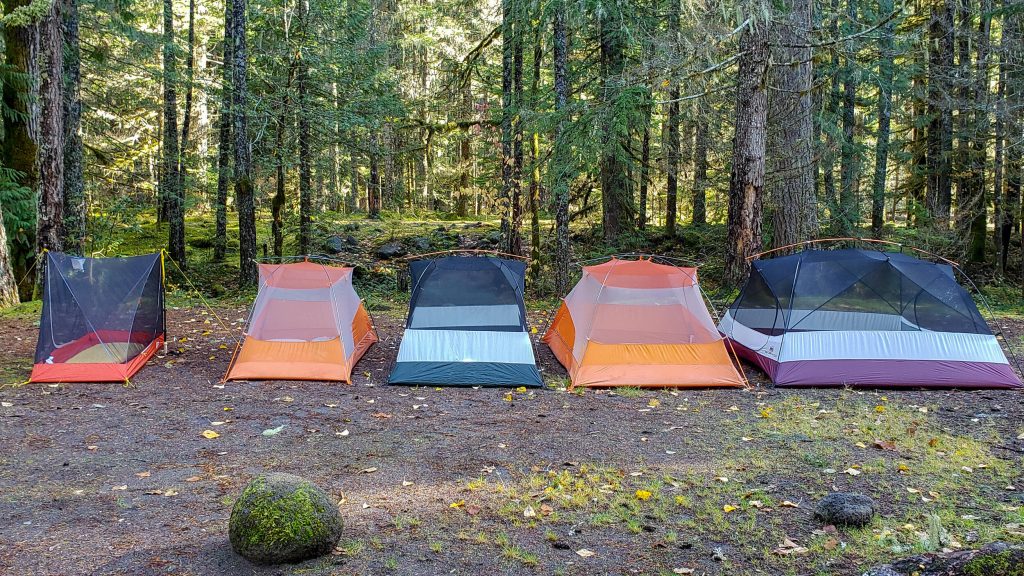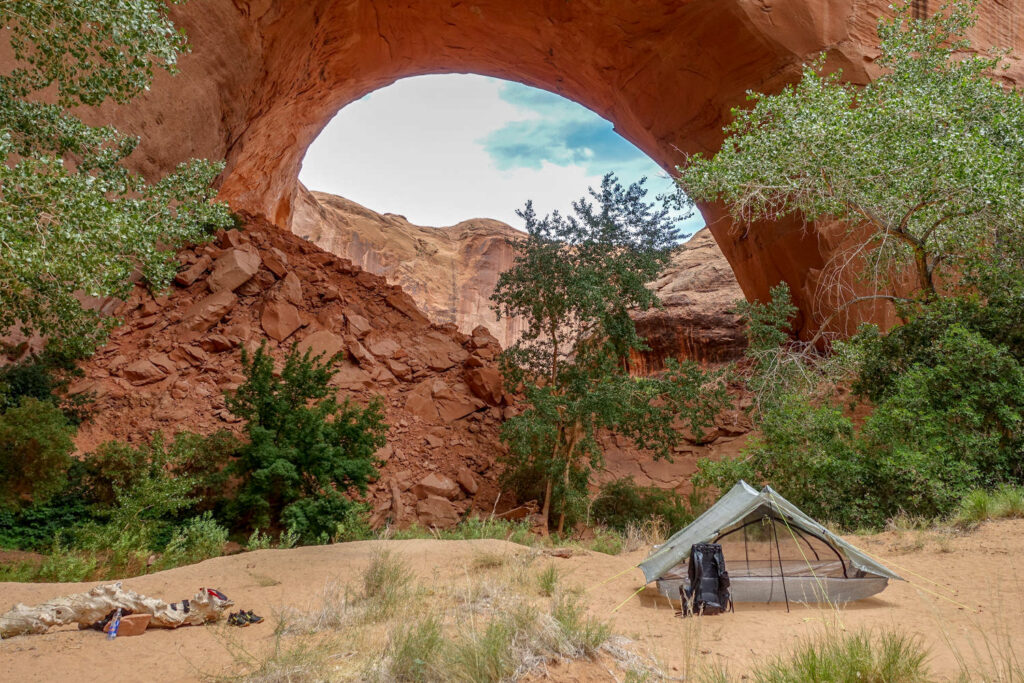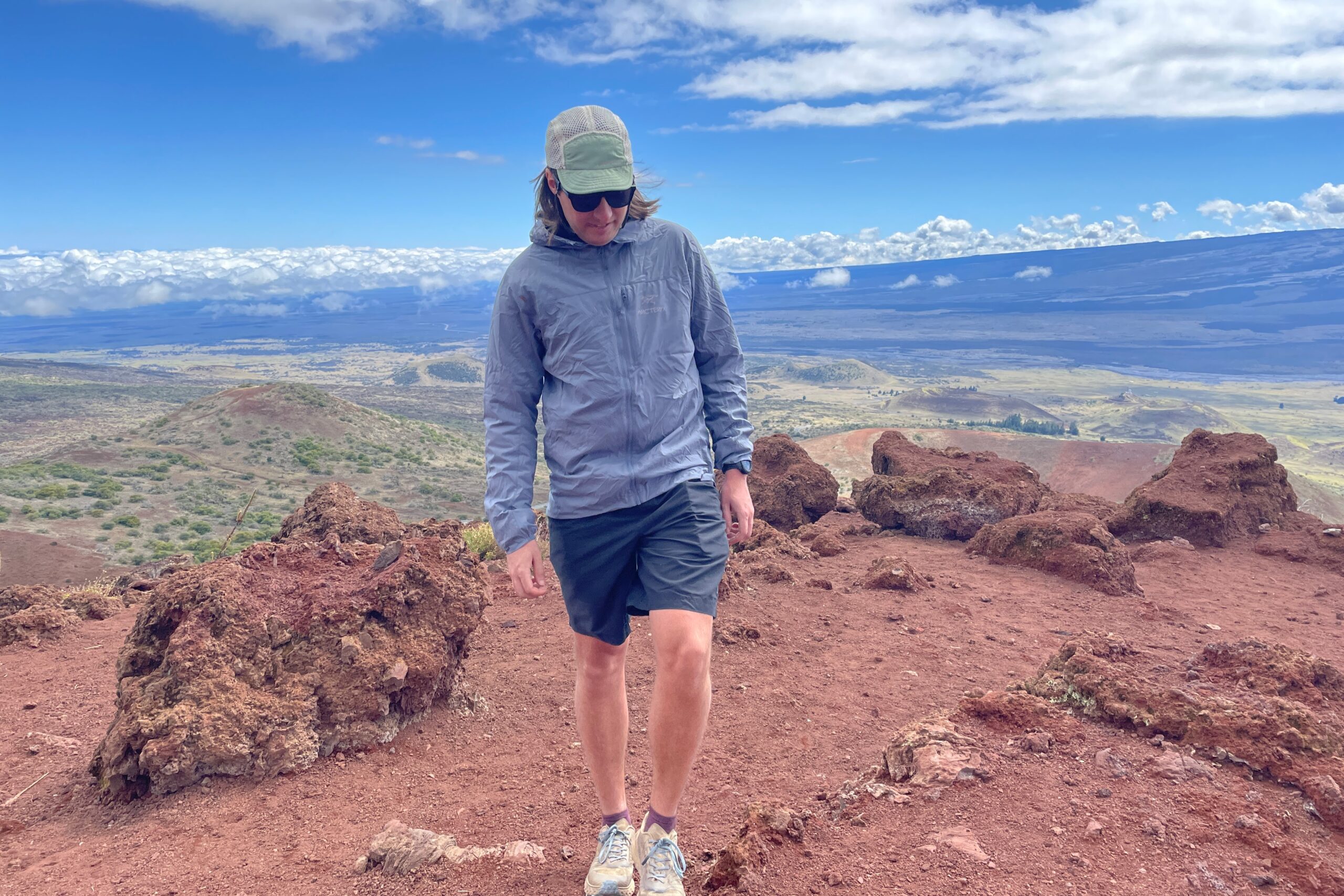
Bottom Line
The Arc’teryx Squamish is an ultralight, wind-resistant shell that is perfect for unpredictable weather. After testing it on everything from winter peaks to summer hikes, the Squamish sits at the top of our list of the best windbreakers. It’s packable, breathable, and designed for hikers, climbers, and recreators needing quick wind protection. Whether you’re hiking the trail or scaling peaks, it’s your go-to for lightweight protection.
The Squamish’s nylon construction is one of the stretchiest and most mobile of any jacket we tested. This makes it great for activities like climbing, running, or skiing where a wide range of motion is needed. With great breathability, the Squamish is an excellent choice for aerobic outings which require a light shell to protect against the elements.
Although it’s one of the most expensive windbreakers on the market, the Squamish is built with Arc’teryx’s high level of durability and attention to detail. We’ve worn one Squamish jacket for the last decade, and it has held up extremely well with no rips, tears, or failures. If you’re looking to invest in a high-quality piece of gear, look no further than the Squamish.
How We Tested
Over two months, we wore the Squamish jacket on hikes and runs as well as backcountry and cross-country ski trips to field test its performance in multiple conditions. Our tests consisted of real-world exposure to the wind and elements. We also used a blow drier to test wind resistance and also completed a one-hour run while intentionally overdressed to test its breathability and moisture management.
Quick Specs
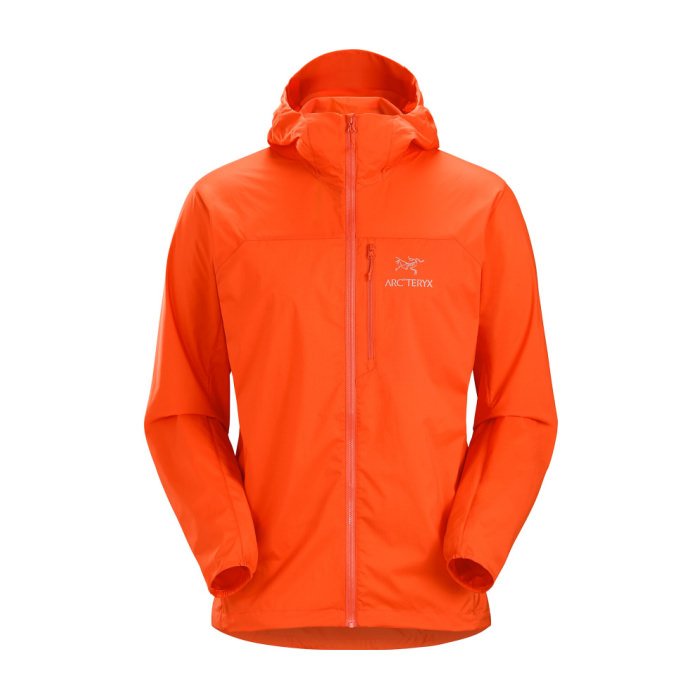
Arc’teryx Squamish
Best Windbreaker Overall
CleverHiker Rating: 4.7/5.0
Price: $220
Weight: 4.9 oz.
Pros
- Ultralight
- High-quality construction
- Packs into its pocket
- Good balance of breathability/protection
- Hood works well with helmets
Cons
- Expensive
- Slim fit makes it a little hard to layer over bulky clothing
Wind & Weather Resistance
We took the Squamish out in a variety of conditions from dry and windy days to wet and wild days in Alaska’s Chugach and Talkeetna Mountains. Our blow drier test also showed it to be completely windproof. Like most windbreakers, it does not keep you dry in a rain storm, but the 30-denier shell with DWR treatment does bead and repel light moisture. The brimmed hood is a great addition to help block wind and precipitation – it even acts like a hat bill to shade the face from the sun.
This shell is slightly thicker than others tested giving it a slight edge over the competition when it comes to weather resistance. The Squamish is a protective layer that we recommend for blustery days.
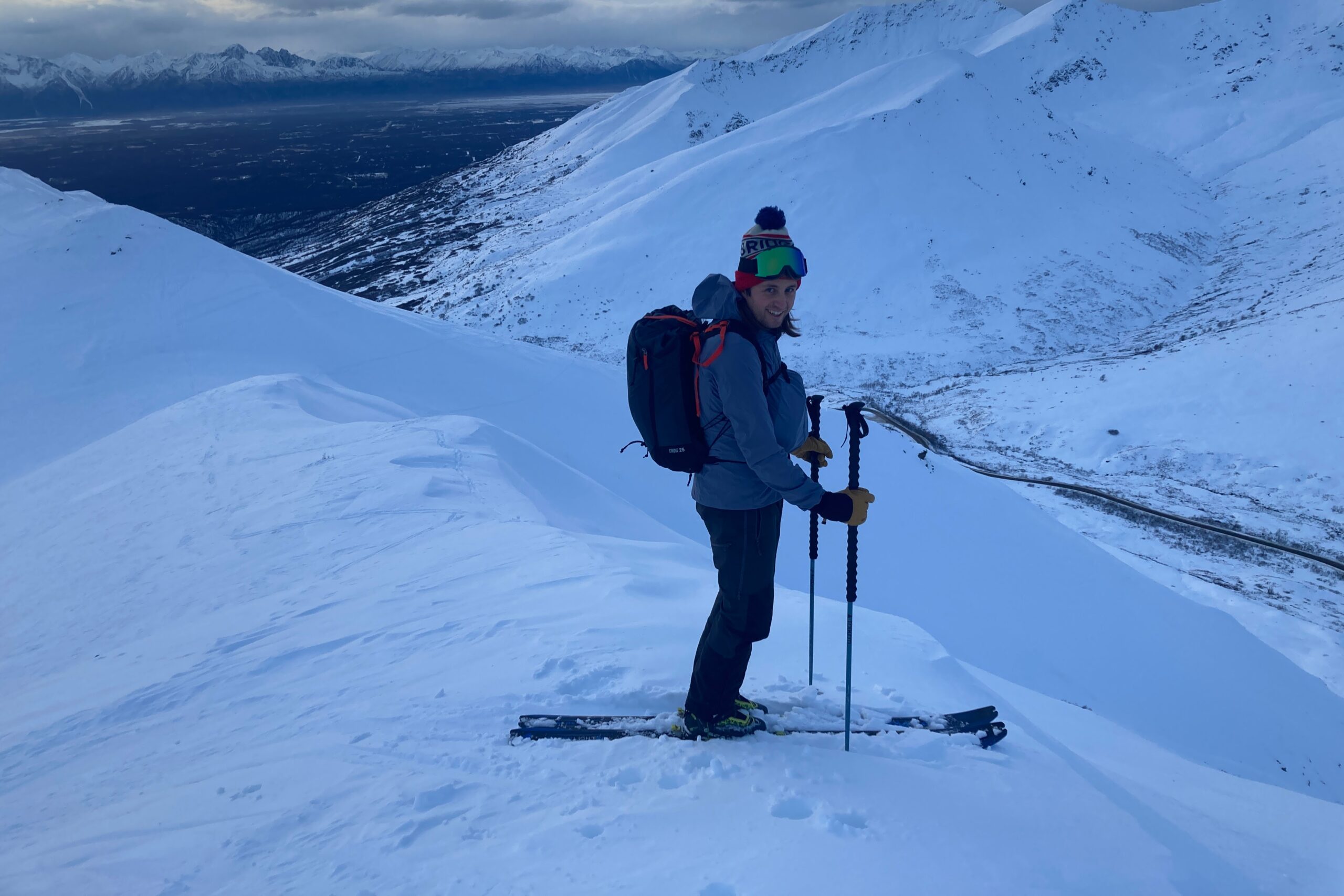
Breathability
Although the shell of the Arc’teryx is on the thicker side, it still breathes extremely well. We tested this jacket while out backcountry ski touring, mountain running, and snowshoeing and found it to be one of the top performers in breathability. There was no excess buildup of moisture within the jacket or feelings of claminess. This makes the Squamish one of our top choices for aerobic activities where we anticipate sweating but still need an extra layer for warmth and wind resistance.
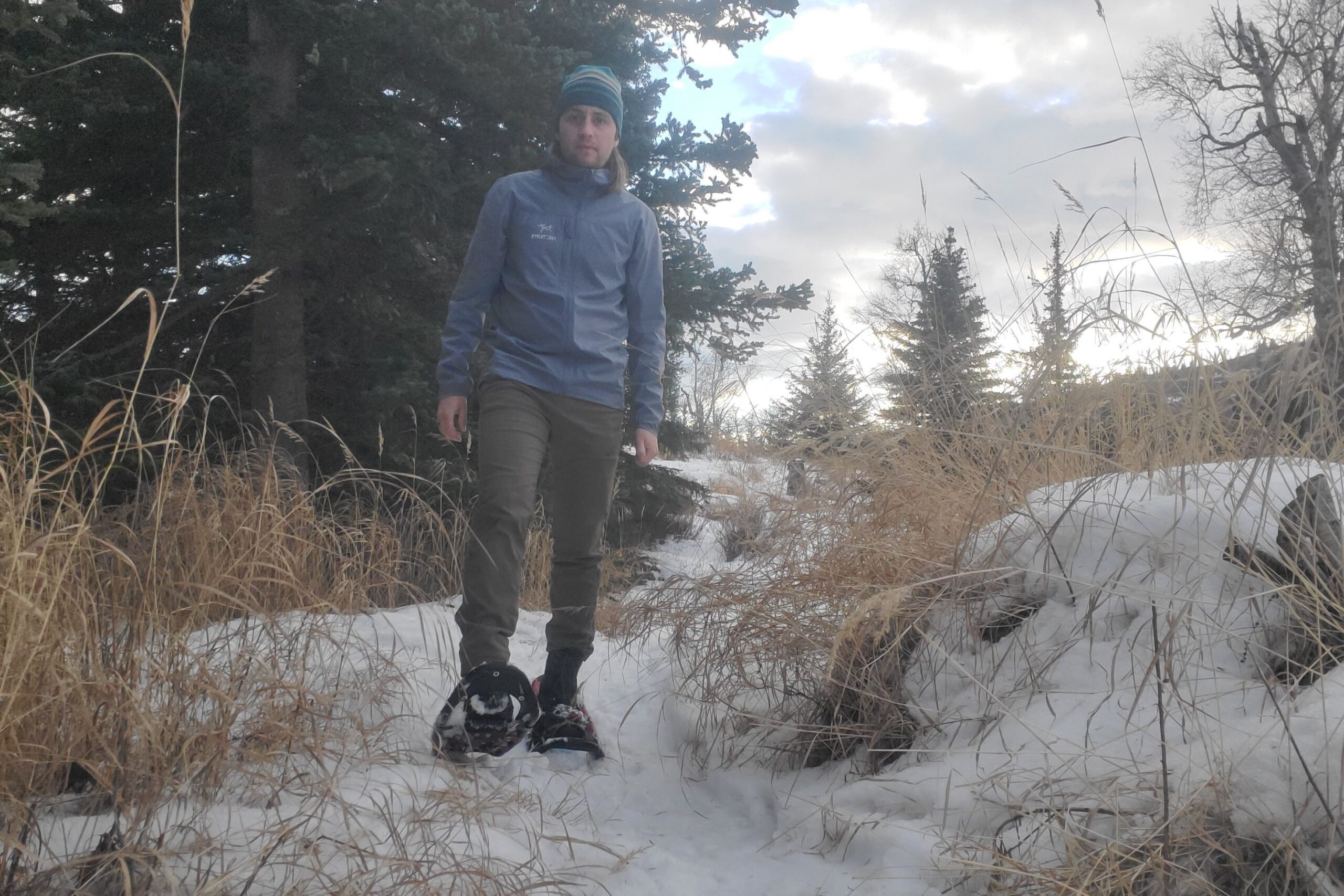
Weight & Packability
The Arc’teryx Squamisth jacket is a great layer to stash in the bottom of a pack in case the wind picks up and you need an extra layer. With the ability to pack into its zippered chest pocket, the Squamish is extremely packable. An added loop makes it easy to clip to a backpack or climbing harness.
We had no problem stuffing this jacket into a running vest or even a running belt. With a measured weight of five ounces (men’s medium) being almost identical to the stated weight of 4.9 oz, this isn’t the lightest jacket on the market. It weighs twice as much as some of the lighter models we tested. This added weight likely comes from the slightly thicker material used. However, we found that the slightly increased weather resistance and comfort were worth it for the minor weight penalty.
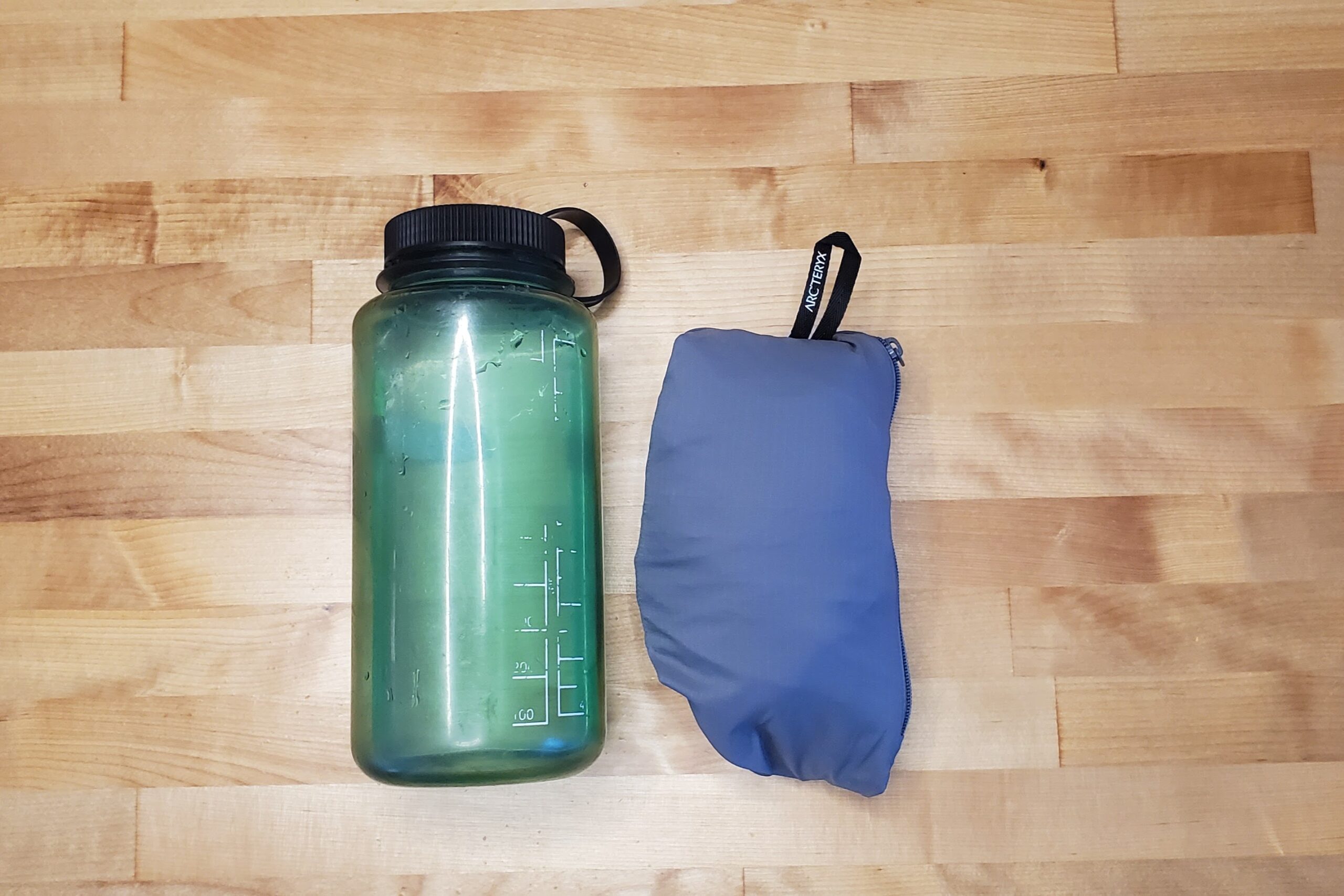
Comfort & Fit
Labeled as a fitted cut, the Squamish is a jacket with an athletic focus. Its slightly trimmer profile makes it better suited for slender bodies or for wearing without a mid-layer underneath. While testing the Squamish in the Alaskan winter, we wore a mid-layer and light vest underneath while backcountry skiing in the Talkeetna Mountains. The jacket was noticeably tighter and fit better with only a base layer underneath. Double cinches in the waist and a cinch in the back of the hood help dial in the fit and keep the jacket secure on windy outings.
This is one of our top choices for a trim and alpine-focused jacket with only the bare necessities.
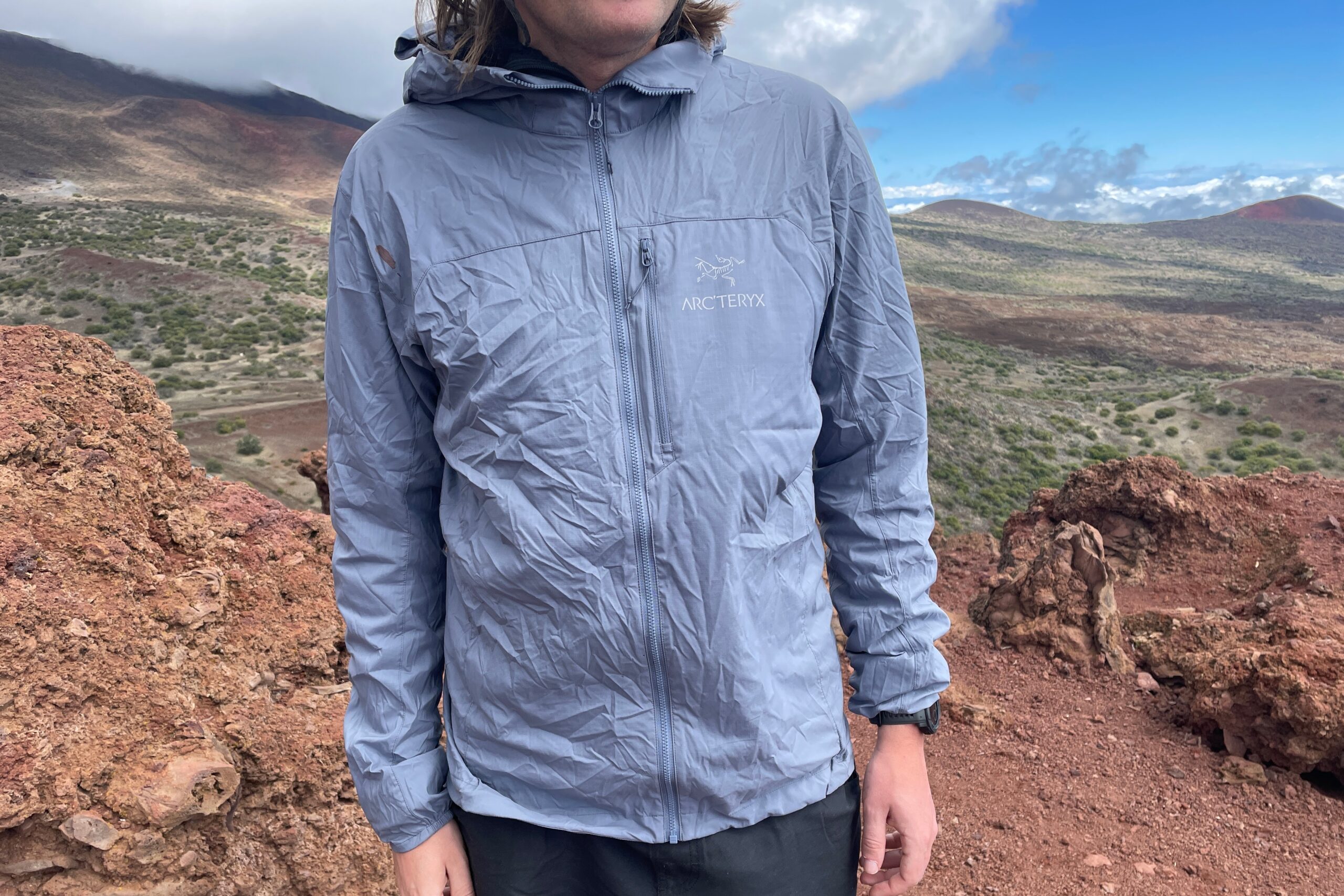
Should You Buy the Arc’Teryx Squamish Jacket?
Buying the Arc’teryx Squamish is an investment in one of the most well-crafted and durable windbreakers out there. While the high price point may not be the best fit for entry-level recreators, it will surely find a place in most people’s closets as an essential piece of gear. The slightly thicker material makes it heavier than other jackets tested, but it is plenty packable, stuffing inside its own chest pocket. The brimmed hood is helmet-compatible without feeling overly large.
Overall, the Squamish is a highly versatile and stylish layer that is great for year-round use for many activities. It remains one of our favorite windbreakers on the market for its great breathability, extreme functionality, and sleek design. This stretchy and elastic jacket is perfect for climbers, bikers, or anyone who requires a high degree of mobility.
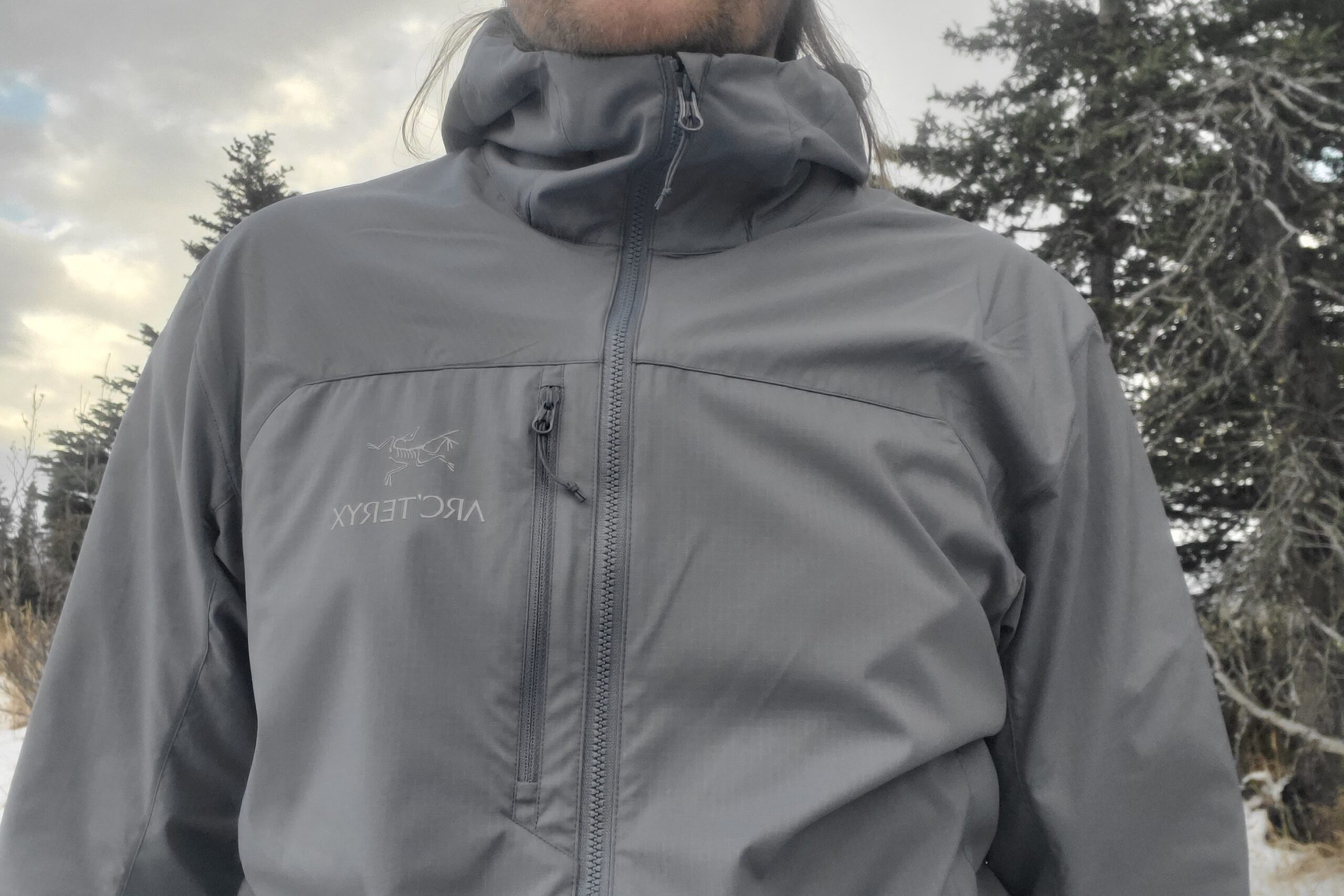
What Other Windbreaker Should You Consider?
Head to our gear guide to see the full lineup of best windbreakers.
Patagonia Houdini Review: Packing into its chest pocket like the Squamish, the Houdini is another lightweight option at a slightly lower price point.
Black Diamond Alpine Start Review: Similarly elastic, the Alpine Start is extremely mobile but with a slightly larger fit to layer underneath more easily.
Montbell Tachyon Review: If the Squamish is a bit heavy for your taste, the Tachyon is one of the lightest jackets in our lineup and is barely noticeable when worn.
